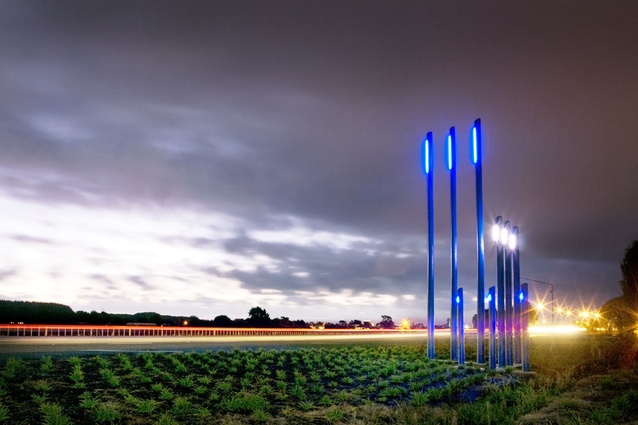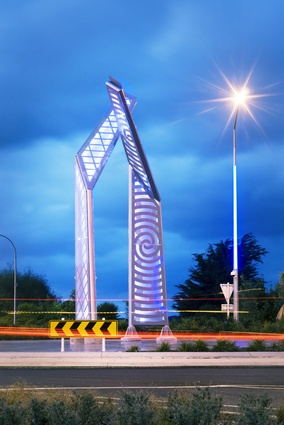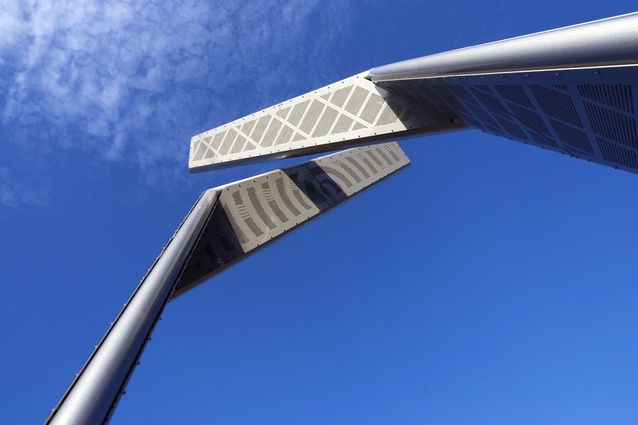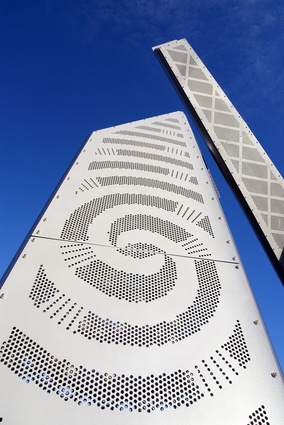Whanganui Gateway
A beautiful entrance for a beautiful city? Void Architecture Research Urbanism attempts to right the wrongs in Whanganui.
Designing a fitting entrance to the beautiful city of Whanganui made for a lot of talk, debate and even argument for architect Mark Southcombe and the Void Architecture Research Urbanism team.

The job had elements of traffic, city and landscape design, and also civil engineering. And because the southern entrance to the city splits the historic Maori settlement of Putiki Mr Southcombe wanted iwi to be satisfied as well.
“The task was way more than window dressing or roundabout decoration. The design needed to embody something of the ageless and emerging identity of Whanganui as a place,” the architect said.
The project began in 2008, not long after the southern approach to the city was blitzed by traffic engineers. Contractors removed an avenue of poplars and replaced them with a wide shoulder and deep drains on either side of State Highway Three.
“They took a relatively attractive piece of road and made it quite ugly,” Mr Southcombe said.
The next problem was that the intersection where Putiki and airport traffic crossed the highway was dangerous. It was a place of many accidents, as doctors who happened to live at the crossroads could attest. The intersection had to be safer, the highway crossing had to be easier for pedestrians and cyclists, and traffic had to be slowed and encouraged off the SH3 bypass and into the picturesque heart of the city. Most importantly, the entrance had to make a statement.
Mr Southcombe was given the job of designing it because he had worked on other aspects of Whanganui urban design - such as its new riverfront boardwalk. Previously a full-time Whanganui resident and still a frequent visitor, he said he mainly got those jobs as a result of his criticism of existing features.
His entranceway brief was a wide one. He and his team analysed the problems, came up with solutions and presented them to Wanganui District Council and what was then Transit New Zealand.
After much jumping through of bureaucratic hoops, work started early in 2010. It took about nine months and the Whanganui Gateway was formally opened late last year, by then Whanganui Mayor Michael Laws.
Planting, sculpture, lighting and a new roundabout are all important elements in the solution. The centrepiece is the roundabout itself. Raised and planted, it’s paved with black polished concrete that is inset with shells from nearby beaches. Slightly off centre is what Mr Southcombe calls “a sculptural element” and others have called the Encounter sculpture - two upstanding metal shapes caught in the act of greeting each other.
Putiki was and is a place of encounter between Maori and later settlers, Mr Southcombe said. One of the pieces represents local Maori and is decorated with the Takarangi spiral. Putiki resident and Maori graphic designer Judd Bailey chose that motif. He said it was a universal symbol for Maori, with the meaning of water, movement and the joining together of two separate elements. It conveyed just the right meaning.
The other shape represents European settlers, and is decorated with the grid pattern of city streets. As cars approach the roundabout from the south the planting intensifies, creating a threshold.
The trees around that centre piece are still relatively small, but the roundabout will eventually be enclosed by planting, especially tall Washingtonia palms and Lombardy poplars - making it “a place of pause”.
Its lighting, designed in collaboration with David Launder of KTL Technologies, is programmed to change slightly from day to day and to subtly direct traffic toward turning north into the heart of the city.
The planting stretching on either side is more open. It’s marked by rhythmic groups of tall Lombardy poplars - trees with a long history in the river valley. There are also flowering gums and cherries - both prominent street trees elsewhere in the city. They have suffered over a dry summer, but should ultimately flourish.
The low planting is a sea of golden Libertia and green Dianella, and there are also rhythmic outbreaks of larger native trees such as the kahikatea and cabbage trees that once grew on the floodplain.
At the southern end are three sets of three vertical poles, each painted a vivid blue and lit up at night. Mr Southcombe said they added scale and contrast and were inspired by sets of former wharf piles in the Whanganui River, and also by the three hapu (Maori subtribes) of the river.
Some of Whanganui’s critical artists rushed to judge the Encounter sculpture after it was erected. Mr Southcombe said they missed the point.
“It’s all the elements together that create the space of encounter.”
Others were happier with the result. Mr Laws was ecstatic, calling it the best city entrance in New Zealand. Mr Southcombe would not be drawn on his opinion, except to say he always looked forward to driving through the gateway when he returned to Whanganui.
“I would like it to be what it is, and I don’t think it needs to be explained.”
And Mr Bailey, who designed the spiral decoration for the sculpture, said Putiki Maori were happy.
“The feedback I have had is they’re absolutely stoked, because it really puts an emphasis on the bicultural component and one of their own has created it.”














